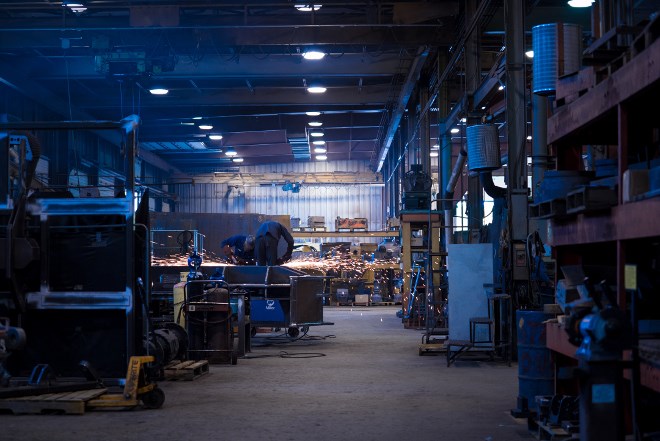Redesigning the mining industry has been the mainstay for Marcotte Mining Machinery Services since its inception in 1979.
Now the Sudbury-based, engineer-driven company is in the process of taking the next big leap into battery-electric vehicles.
The latest improvement has been the RAM40 carrier, which general manager Alicia Woods said all their future platforms will be based on. This carrier is ushering in the future for the company as a battery-operated vehicle in partnership with Siemens.
The new carrier has been designed with operator safety, easy maintenance and standardization in mind and is able to accommodate the entire fleet, integrating low horsepower, high horsepower, Tier 4 or a Siemens battery drive package. It features better sight lines and increased visibility, making it safer for the operator and those working around it.
Maintenance of the carrier can be performed at ground level, making it safer for those performing repairs and daily checks.
Woods explained battery power is new to the company and the industry, so it made sense to partner with a long-time manufacturer and expert in that sector.
There are many reasons for creating the RAM40. The mining industry is always looking to improve health and safety for its employees, as well as becoming more efficient, lower costs and be more environmentally conscious.
The move to battery-electric, Woods said, does all of this. It improves ventilation, makes for better working conditions for workers, creates less noise, and is a better machine for the environment.
The company took the first big leap in battery-electric vehicles with the delivery of a hauler to Kirkland Lake (KL) Gold.
“We are very excited about that because KL Gold has been using battery-electric vehicles for years. I think they were one of the first mines to start adapting that technology,” Woods said. “It's exciting to be a part of that with them.”
Other mining projects adding battery-electric to their fleets include Glencore’s Onaping Depth and Nickel Rim, and Vale's Victor and Upper Kelly Lake projects.
More mines are being designed for battery-operated technology due to mines going deeper and ventilation getting expensive. Battery technology saves time and money.
The drive is to get the operators away from the face, making mining safer.
After 40 years designing utility vehicles and launching industry changers like the Minejack chassis, Woods said the company has been focusing more on the people who make it all happen.
“Since I came back in 2015, we've been working on what I call the three Ps: people, product, partnership,” she said.
Marcotte works to have the right people in place to support each department and its customers, while the company is continuously improving its product, and at the same time, setting up partnerships with vendors, manufacturers, customers and companies that have proven to be strong performers.
Marcotte owns the rights to the MineJack, a heavy-duty diesel-powered carrier that was designed by TimberJack in the 1960s. Timberland purchased the patent for it in 1992.
Marcotte was a major customer for the MineJack, using it as a basis for their line of underground mining vehicles. After Timberland acquired Marcotte in 1995, production of the vehicle was moved to Sudbury, bringing the entire engineering, production and service operation under one roof.
The company can do conversions on the MineJacks and has designed the RAM40 with battery power, as demand is expected to grow.
Marcotte also designed the side shift feature for scissor lifts, which allows a cantilevered platform to move to either side of a fixed position base. This is found in many scissor lifts today.
Each time a new project gets underway, Woods said, everyone in the building meets to discuss how the build will proceed. Since it’s hard to discuss a concept over the phone, in-person meetings are a must.
“Everyone in the building touches the project from beginning to end,” Woods said.
The Drift magazine, a new publication from Northern Ontario Business, features profiles on the people and companies making important contributions to the Northern Ontario mining service and supply industry.




